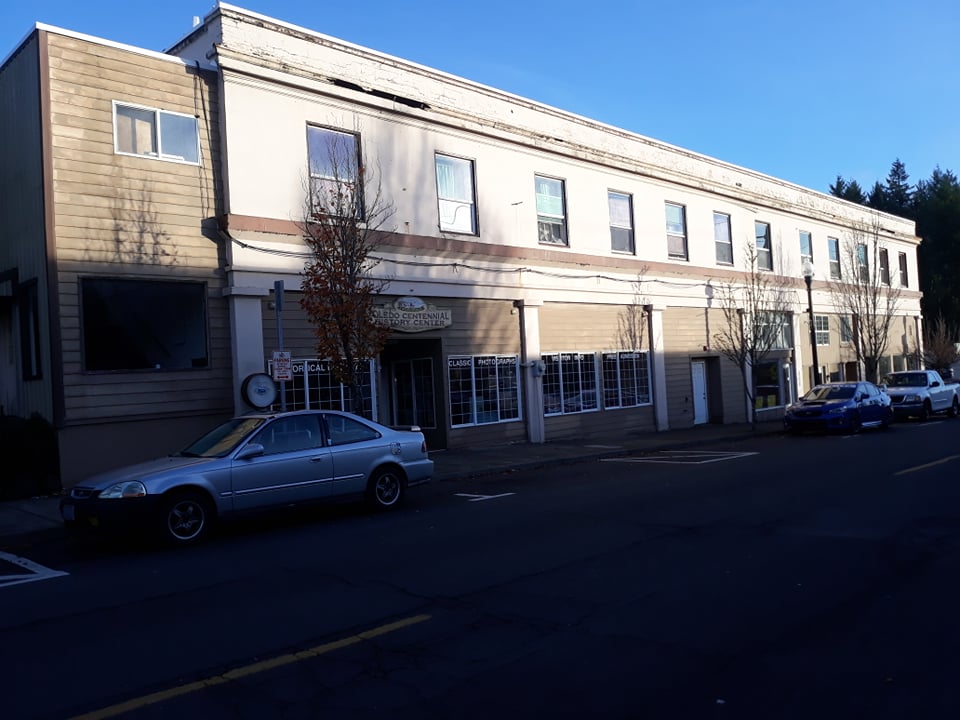I. Toledo Cleaners Building (Cobblestone Pizza) – 300 S. Main
Building was built in 1954 by Max & Emily Damon, who owned the “Model Cleaners” on the site, to house the cleaning business plus City finance. This building replaced the first cleaners in the county built by Warren Hall in 1927. In the early 1900’s, the site was home to one of the earliest stores in the Toledo area, T.P. Fish’s grocery/drug store. It burned in 1900; Fish rebuilt the same year a dry goods and millinery store facing SE 2nd Street.
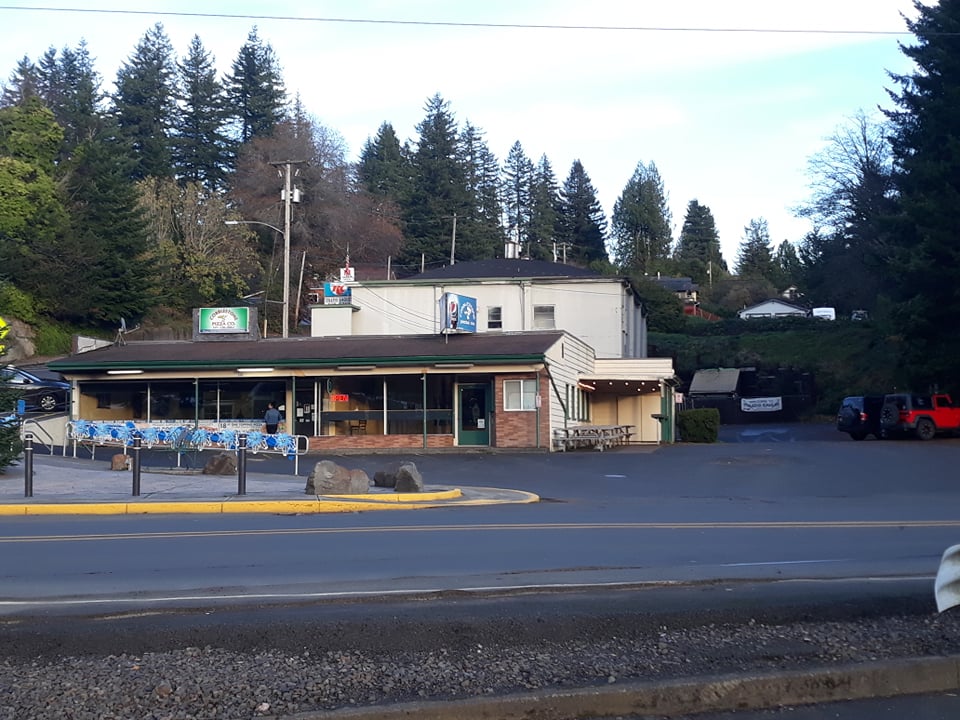
2. Waterfront area 367 south west Butler Bridge Road.
Toledo’s waterfront along Depot Slough was the first area to be developed, since most travel was on the river. The “Yaquina Strip”, originally part of the Siletz Reservation, opened to settlement in 1866. William Mackey, Joseph Graham and Sam Logan soon filed claims on both sides of the river. Joseph was too young to file, and so sent to Corvallis for his father, John Graham, who claimed 320 acres where Toledo is sited today. Mackey claimed the point on the south side of the river, today’s Skeleton Point. His home was also the first post office, opened in 1868. John Graham built a 16 room home about where Hotel Toledo is today. By 1885, the railroad came into Toledo, and the waterfront area included a hotel, two stores, a saloon, feed stable, blacksmith shop, sawmills and landings for passenger and commercial shipping. The Commercial Hotel opened in 1901. Guy Roberts Mill was moved here from Monroe in 1917, and was located where the commercial fishing boats now moor at the Port of Toledo’s marina. This mill cut the timbers for the construction of the big spruce mill built just a year later across the slough. Nearby was Toledo Creamery, a farmer’s cooperative, and earlier Anderson Boat Works. Today’s Main Street, called Hill Street until 1931, developed roughly parallel to the waterfront. By 1937, when fire destroyed the waterfront buildings, most commerce had moved to Main Street, and the waterfront area was never rebuilt.
3. Foot of Main on West Side butler bridge and south main
Early photos show a planked street and wooden sidewalks on Main Street. Here at the foot of the street stood a small angled building the early residents called “The Flatiron Building”. In the early 1900’s it was used as offices of the Lincoln County Telephone and Telegraph Company. It was also used as a meat market and later by Rosemary Schenck as a millinery shop. It was badly scorched during the 1937 waterfront fire and torn down, not to be replaced.
4. Professional Building (Attorney office and various shops) – 213-235 S. Main
The plaque gives a building date of 1957. Earlier buildings of wood had a similar shape. The small end, built around 1899 or 1900, housed first the Toledo Reporter newspaper, then C.B. Crosno’s real estate office, then the Midget Café. The middle section was used as the post office in 1910 and later the Atwater “Shoe Hospital”. Located at the north end of the present building was an earlier structure erected in the early 1900’s and used as a general mercantile store known as the ‘White House”. Pictured is R.S. Van Cleve working in the mercantile. Later kC. Crews made a floral & feed shop out of it. It later became Toledo Florist.
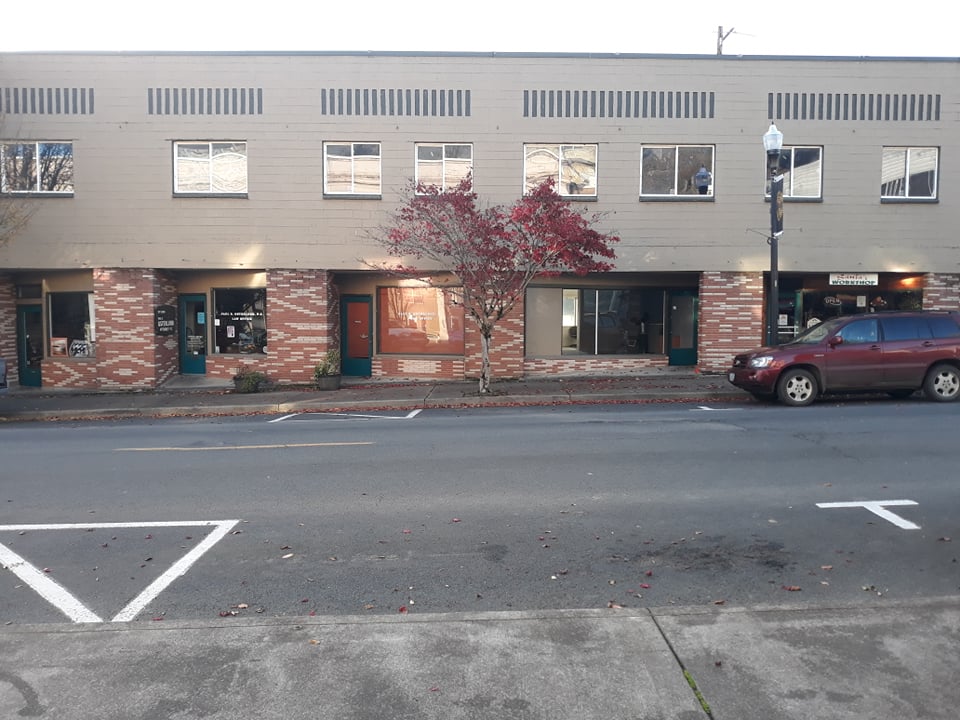
5. South Main Deck 199 south main
In 1959, fire started in the Sunnyside Café, located where the Timbers Restaurant is today. Four businesses, Thomson Drug Co., the Sunnyside, Irene’s Sport Shop & City Meat Lockers were destroyed. The building was never replaced in this location, and in 2003 the Navy Seabees built this deck for the city. From here we can see the location of the Toledo Depot, built in 1893 using brick from the ship’s ballast. Passenger service as well as freight and milk transport to the valley were the bread & butter of the railroad. The train followed the Yaquina River to Yaquina City, just three miles east of Newport. Passengers took ferries into Newport. We can also see the location of Fischer Storey sawmill, which burned in 1919, and location later of the “Cooperage”, a buffer tube stave mill in the 1920s-1940s. This mill later was converted to a plywood mill, then a chopstick factory. YPRHS’s Heritage Square occupies the site today.
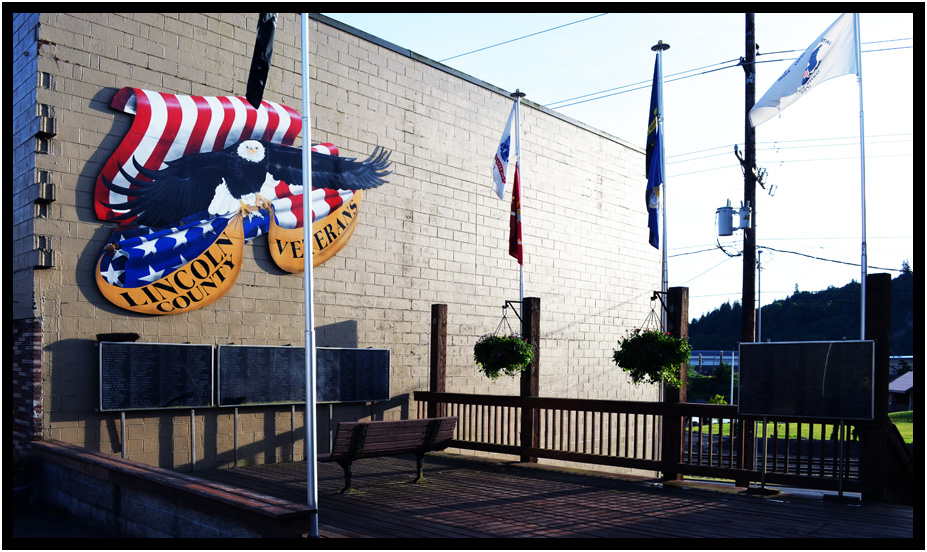
6. Timbers Restaurant – 181 S. Main.
Old timers remember the Sunnyside, which occupied this space in the past, as a place where steaks were only $.60 to $1.00, you got a huge slice of fresh pie, and everything was prepared from scratch. Mill workers kept the place hopping from 6 am to I am.
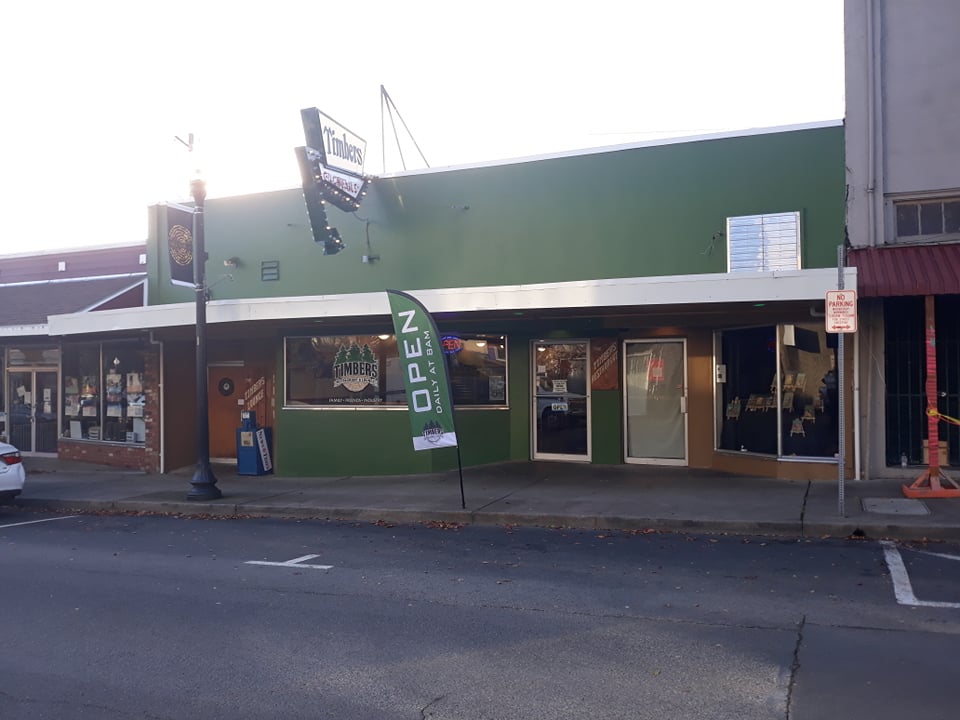
7. Zedwick Building – 139 S. Main.
This two-storied concrete hollow tile building was built in 1928. It is credited with stopping the progress of the 1959 fire. Scorch marks are still visible on the brick. The building housed Safeway for some years, and then Farrington’s Five and Ten Cent Store.
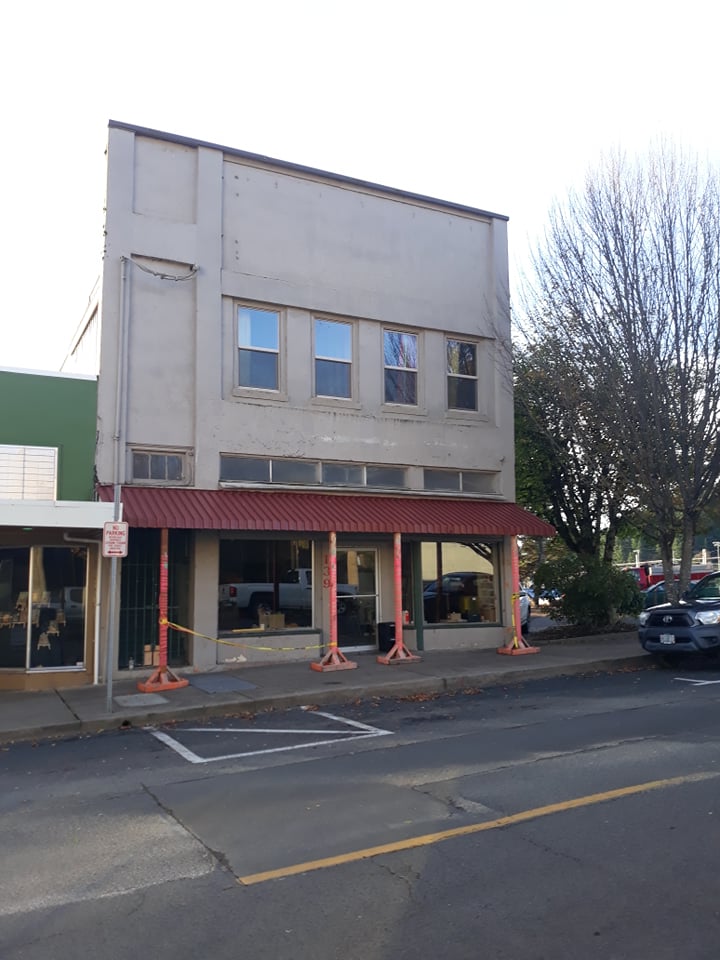
8. Ofstedahl Building – SW corner of Main & Graham (City Parking Lot)
Two buildings were torn down to create this parking lot. One was the Ofstedahl Building, known as the home of Toledo’s first theater, the “Dime” opened in 1910 by James Ross. It was a silent movie house, featuring piano music and vocals of James’ daughter Verne, as well as the singing of local people. The other building located on the corner of Graham and Main was called the Andrews Building, built by Ofstedalil in 1897 or 1898 to house Krogstad’s Drug Store and John Ofstedahi’s dry goods store. It was the earliest large commercial building on Main Street. Later Herman’s Men’s Store occupied the north end, while Al’s Place was in the other half. The site of the building was the private Graham cemetery, which had to be moved for construction. Bricks used were made locally at Dundon Brickworks, located where the Dairy Queen is today. Andrews bought the building in 1918 and added a pool room in the basement, the Cozy Billiards, and a small concrete building on the back, which housed the first Mel’s Ice Cream Store.
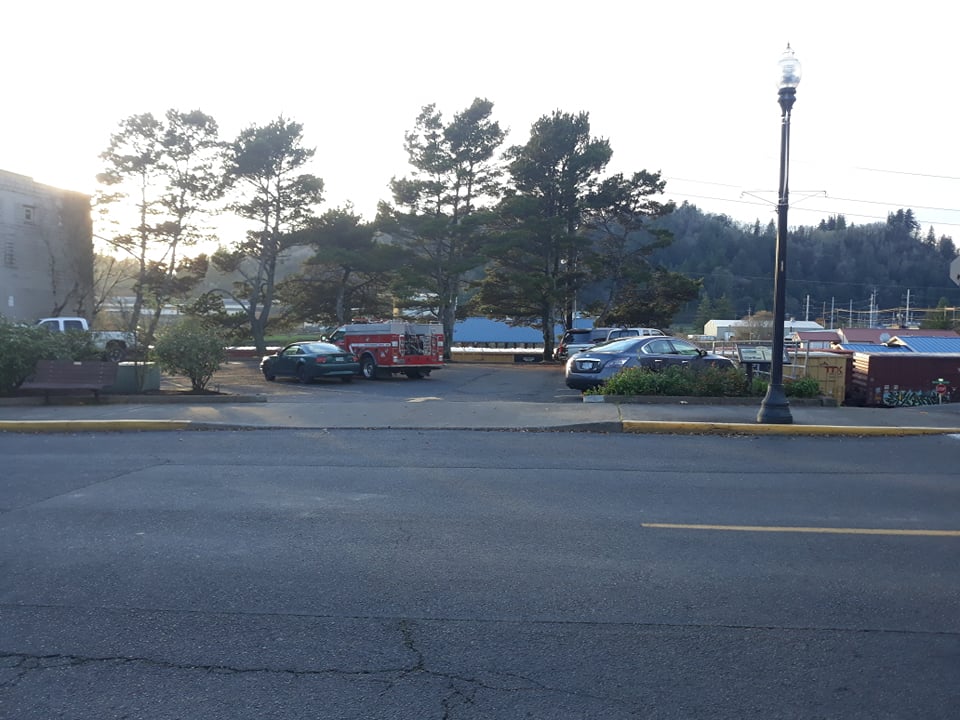
9. Bateman building (Apartments) – 109 N. Main
In 1911, R.S. Van Cleve built this building. At that time it was called “The White Corner Store”. Booth and Burcroff were later owners of the building and operated a grocery and general store here. In 1938, Safeway moved into the ground floor. Upstairs were offices of lawyer L.G. English and insurance carrier B.F. Updike, as well as the Toledo Chamber offices. In the basement were the liquor store and Bateman’s furniture store.
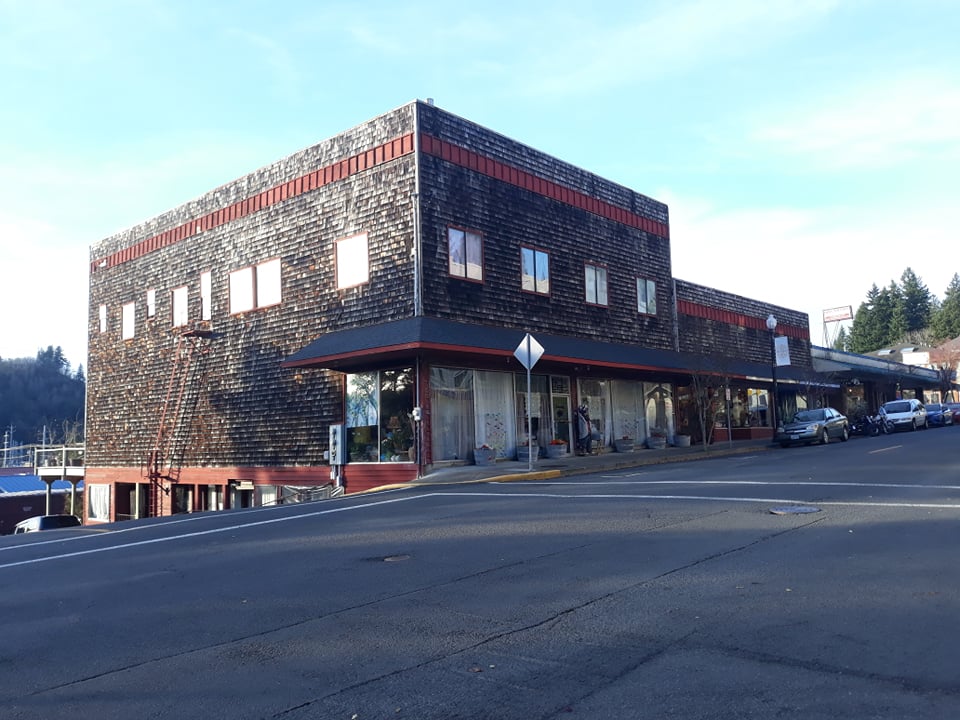
10. Rosebrook Building (Thrift Store & Vacant Shop) – 123 & 147 N. Main
Although this building appears to be part of Bateman’s, it is actually a separate building, and is one of the oldest on Main Street, built just before 1900. It was a furniture and music store in the early 1900’s run by Austin Rosebrook and then O.R. Hollingsworth. Crider’s department store was located here in the 1950’s and 60’s. Ada’s Antiques operated from 1980 to 2005. The Methodist Thrift Store has been in business in Toledo in various locations for more than 50 years. It is operated by volunteers from the Trinity United Methodist Church.
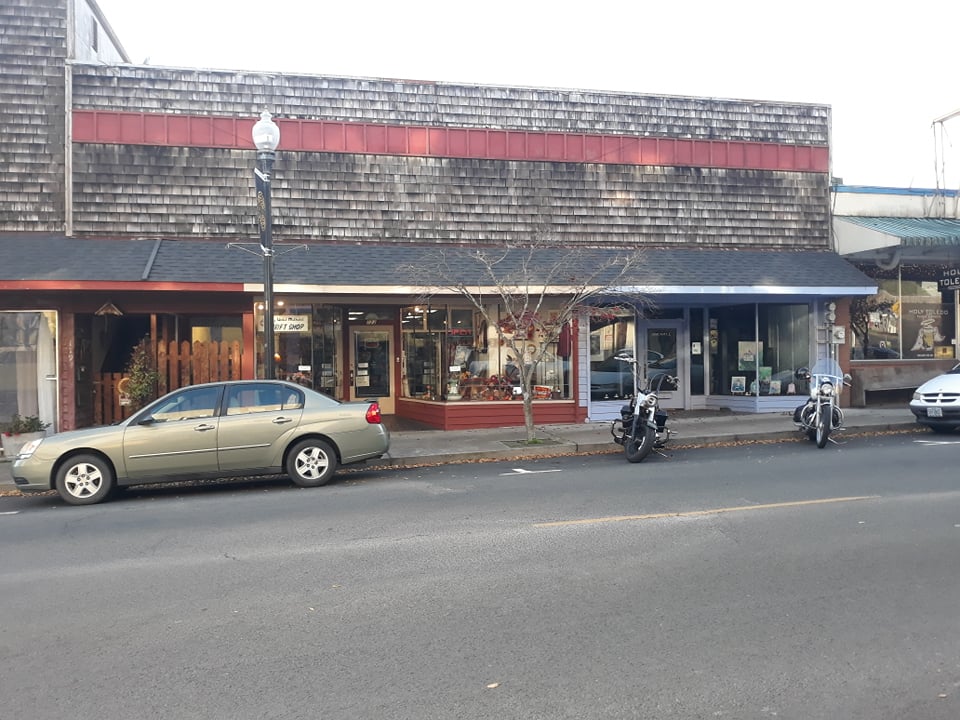
11. Akin Block – (Holy Toledo & Papez Jewelry) 155-195 N. Main
This building was built in 1923 by J.S. Akin, a Toledo pioneer. The original building was added on to both ends. Steps once led down to the basement area from Main, where the Lincoln Leader, the county’s major newspaper, was located. This was the second location of the paper, which was originally housed in a small building on the waterfront. In the 1940’s, the Akin building housed (from south to north) Miller Jewelry, Mauler’s Clothing Store, Purity Bakery, Ed Burch’s Barber Shop, Toledo Drug, and Lincoln Meat Market where Papez Jewelry is located today.
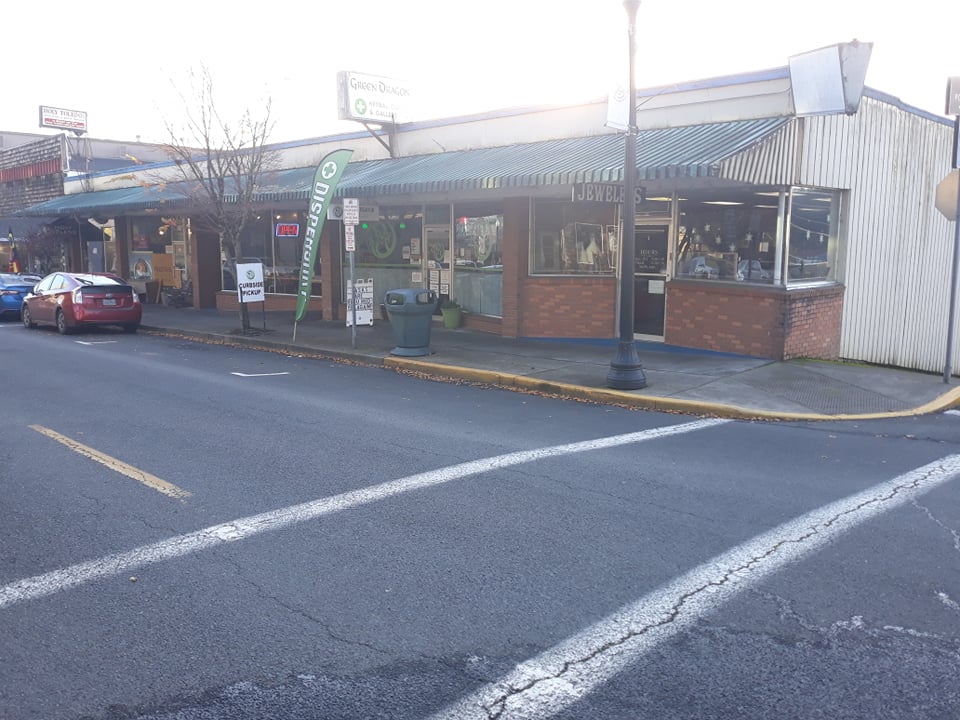
12. Ross Theater (Cascades West Senior & Disabled Service) – 203 N. Main
Today’s Cascades West building occupies the site of the affectionately remembered Ross Theater. Built in 1927, the Ross was owned and operated by Verne Ross for more than 50 years. It fell into disrepair during the 1980’s and 90’s and was donated to the city. It was torn down in 1990. The theater was an important place in the days before television and especially before VCRs. Miss Ross always made sure that children who couldn’t afford the admission could do odd jobs for her in order to earn it. She gave free matinees to all the school children at Christmas time, and was generally loved in the community. She was a lifelong resident. An earlier building occupied the site until it burned in 1913, variously known as the “Toledo Opera House”, and “Gust Olson’s Barn”. The building was a community gathering place for some years, and when Toledo was selected as the county seat of the newly formed Lincoln County in 1893, this building was used as the first meeting place for the county commissioners.
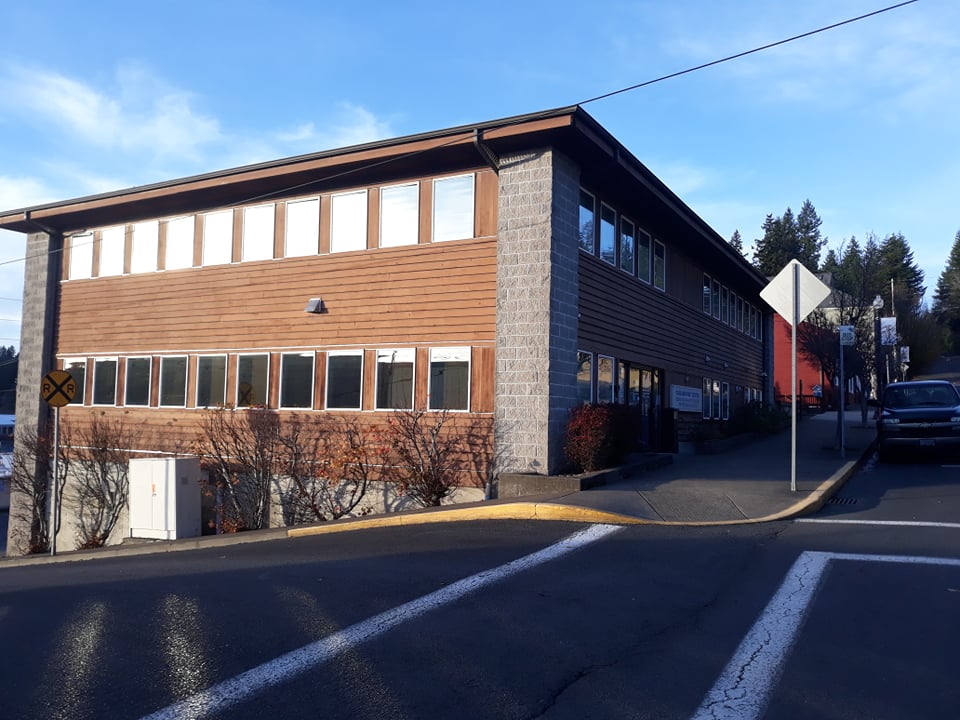
13. North Main Street Deck 203 north main
From this location we can see Memorial field, which has been used as a ball field for most of the town’s history. It was described as “the only flat place in town”, and before tide gates and pump stations were built, it would flood at high tide. Ball players remember “pushing the ball under the water so the other team couldn’t see it” as a Toledo tactic. It worked! Football players were often mud from head to toe at the end of a game. Beside Memorial Field was the Lincoln Hospital, built by the C.D. Johnson Company for the community. It was the first hospital in the county. Later, New Lincoln Hospital was built near the west entrance off Highway 20. Closed when Pacific Communities Hospital opened in Newport, the building is used by Toledo Foursquare Church today. Beyond Memorial Field is the location of the Pacific Spruce or C.D. Johnson Lumber Mill, the largest spruce sawmill in the world in its day. It was built by the U.S. Army Spruce Division in 1918 to provide airplane quality spruce lumber for the war effort, but the war ended before the mill was completely finished. The Army also built logging railroads into the Siletz Gorge, to Otter Rock, and to Yachats into the old growth stands. C.D. Johnson bought the mill and the railroads in 1922, and began production. Johnson estimated production at a million board feet a day for more than 100 years, based on the resources of the area. The mill employed around 800 people, and brought many workers in from other parts of the country to live in Toledo. Toledo’s population increased threefold in just a couple of years, and many houses date to that period when housing was built for all the new resident workers. The whistles of the mill signaled the time of day for the whole town, and the town marshal was needed to direct traffic when the mill’s shift ended. A footbridge across Depot Slough to the mill was constructed in 1922. Many workers walked to work, sometimes several miles. There was some housing on the mill property, and an employee’s cafeteria, where townspeople were also welcome to buy a hearty meal. After key members of the Johnson family were killed in an airplane accident, Georgia-Pacific bought the mill in 1956. GP operated the mill until 1962. Only one building from the mill is still standing, called shed five, where today railroad cars of wood chips for the pulp and paper mill are unloaded. GP Paper Mill opened in 1959, and is today the second largest employer in Lincoln County, with about 450 workers.
14. Toledo Skating Ring (Cup of Sass and True Lineage Kenpo Karate) – 281 & 297 N. Main
This building was built in 1911 by Gust Olson, who also ran a livery stable where the Ross Theater was later located. It was originally a skating rink, and then retail stores such as Hawthorne’s, Refvem’s, Heffner’s and Benson’s Variety occupied the space, along with Mel’s Ice Cream, THE place to hang out in the 1950’s and 60’s. Marge & Mel Hamemess made the best ice cream, hamburgers and French fries, and had a full soda fountain. On a Friday night after the movie or a ball game, it was full—while out on Main Street cars cruised up and down the street.

15. IOOF Hall (Crow’s Nest Gallery & Studio/apartments) – 305 N. Main
This building, built in 1911, is known as the IOOF Building, as the Oddfellows met upstairs for many years. On the ground floor, several different hardware stores did business, including Parr’s, McKay’s, & Kenyon’s. During WWI, the space was developed into the Liberty Theater and a pool hall, to entertain the troops who were stationed in Toledo, living in tent cities, to build the big mill. Toledo had two movie theaters between 1918 and 1926, when the Liberty closed.
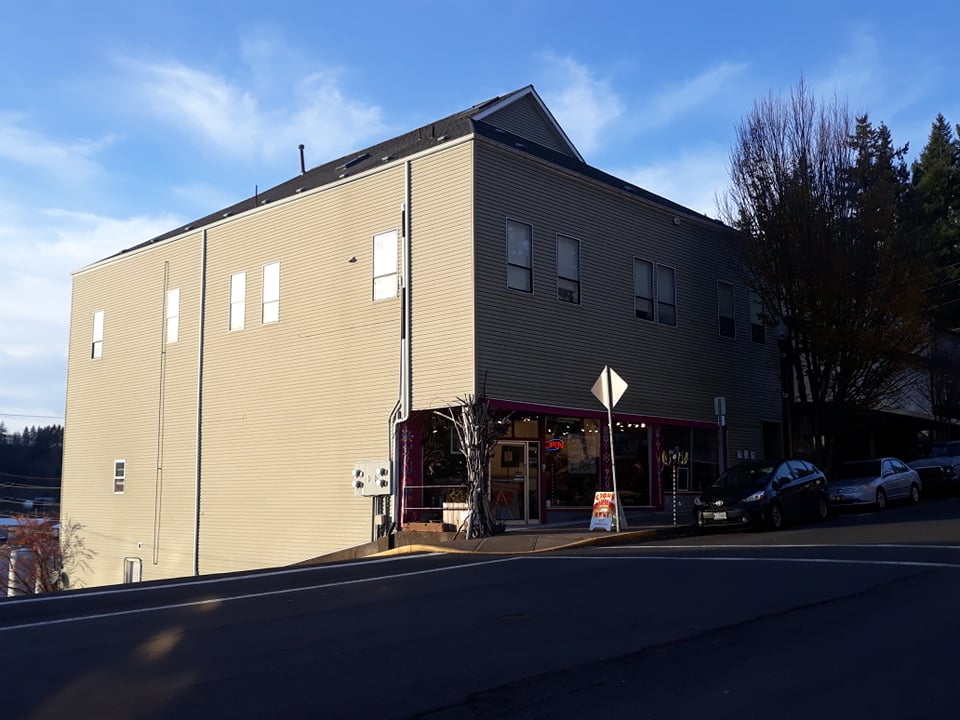
16. J C Penney’s (Second Hand Store) – 333 N. Main
This building was built in 1928 by Graham and Bogart for the J C Penney Co. Penney’s was a staple of downtown Toledo until the store moved to Newport in 1964. Locals remember their fascination as children with the whizzing cylindrical change containers which traveled on overhead wires from each sales counter to the cashier upstairs. After Penney’s left, the space was occupied by Toledo Furniture until the 1980’s.
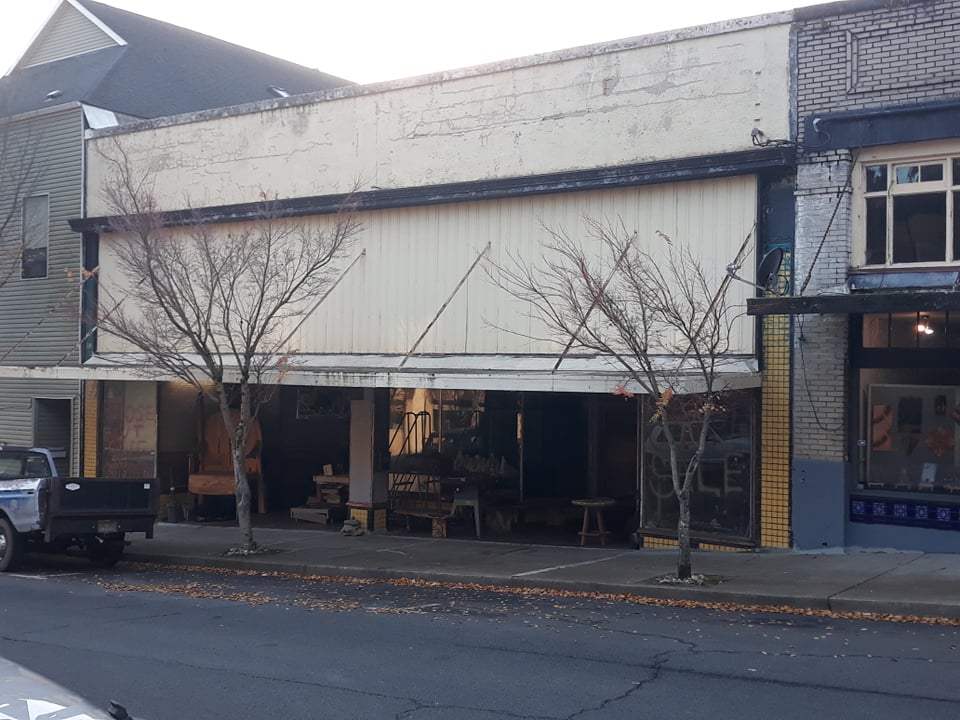
17. Woodson Garage (S & K Automotive) – 355-395 N. Main
This building was built in 1924 by Graham & Bogart to house the Graham Garage, replacing an earlier building which was Graham Livery. William Graham, grandson of John Graham, ran a stage from Toledo to Siletz, first horse-drawn, and later a touring car. A residence was next to the livery stable. Both were torn down to make way for this building. Graham Garage became Woodson Motors in 1927, which was a Chevrolet dealer, service garage, and gas station. Other shops in the building housed the Central Lincoln PUD and Todd Electric in 1941.
19. Leader Building 404 N. Main
At the head of Main Street is the Leader Building, built in 1959 for the Lincoln Leader newspaper. Under the leadership of Elmer Price, owner and editor, the Lincoln Leader became the first Oregon newspaper to publish using the web offset printing method that quickly became the industry standard for newspaper production. Price pioneered the technology of offset printing west of the Mississippi River here in Toledo.
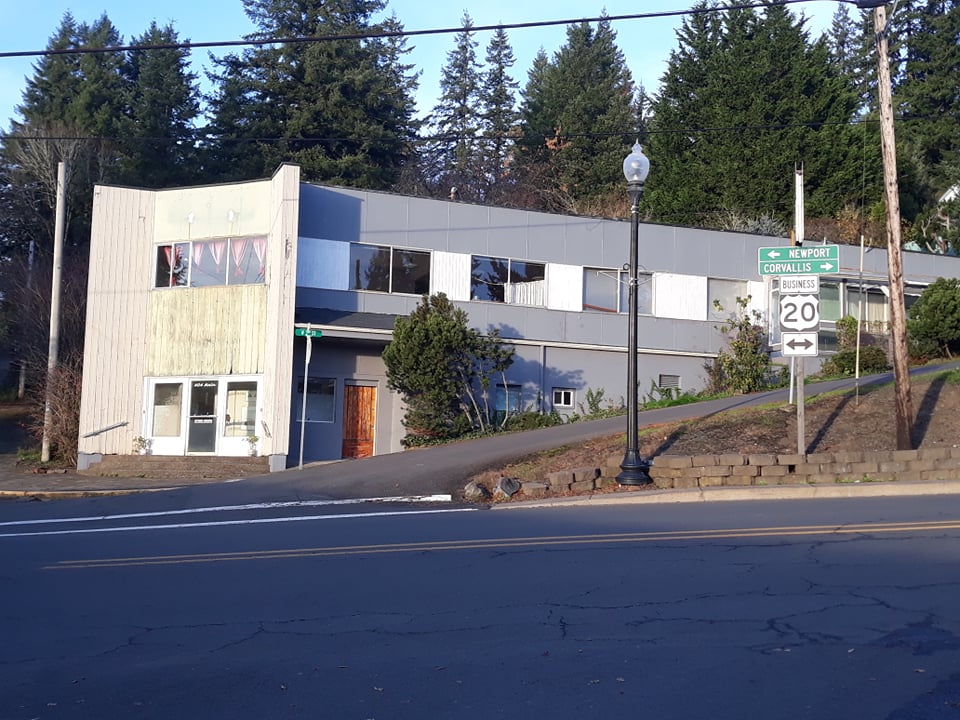
20. Updike Building (Children’s clothing store/appliance store/apartments) – 320 N. Main
This building was built in 1926 by local businessman Frank Updike. It replaced an earlier wooden building which was Johnny Yasek’s livery stable. The Lincoln County Health Department was housed upstairs in the Updike building, and Dr. Matthew Gruber also had his office there. The ground floor was Irish & Hawthorne Grocery, and then Coleman Furniture and Toledo Furniture. Dr. George Henderson, optometrist, had his office on the north end.
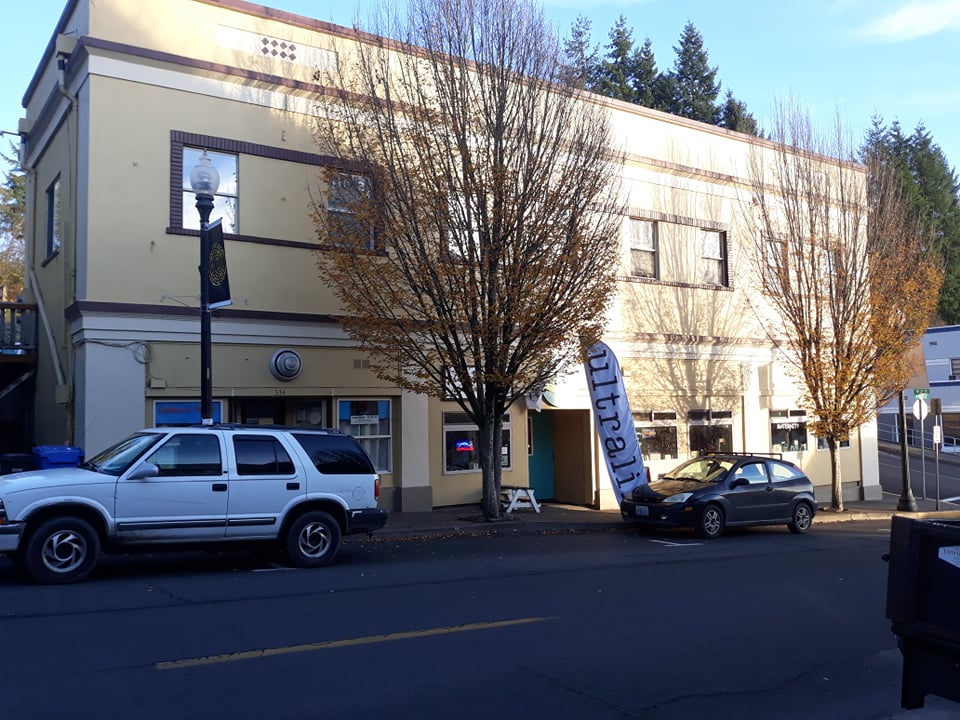
21. City Hall – 206 N. Main
Toledo City Hall was built in 1939 as a WPA project at a cost of $30,000. Prior to the construction of this building, city business was conducted in a small wooden two story building one block up Graham Street at Alder, which also housed the fire department on its ground floor.
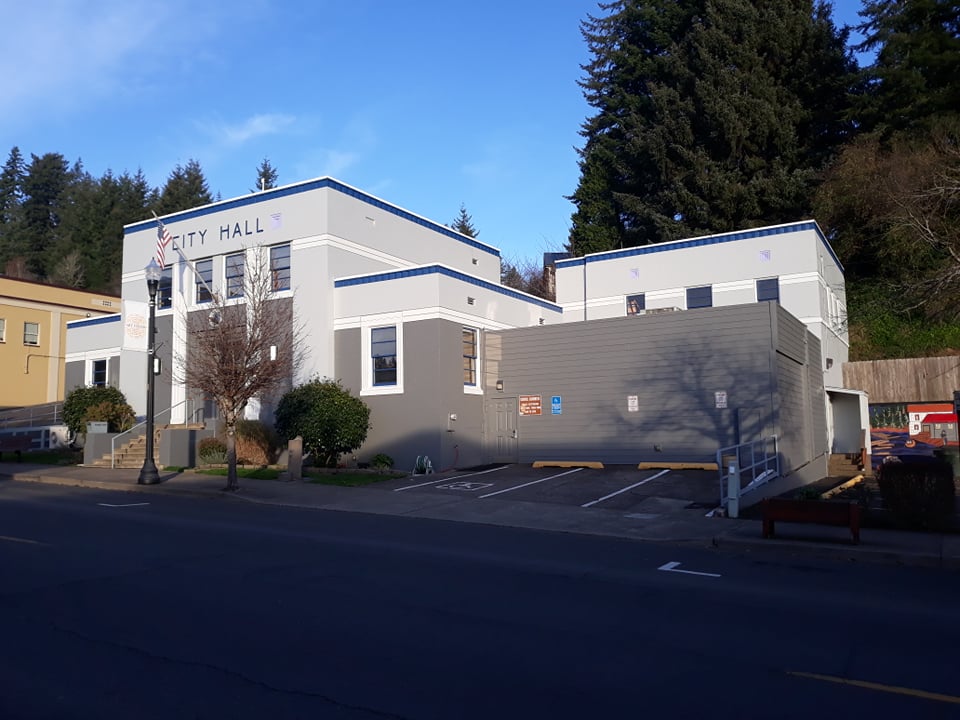
22. Master Service Station (City Hall parking lot) 206 north main
The city hall parking lot was the location of the Master Texaco Station built in 1936.
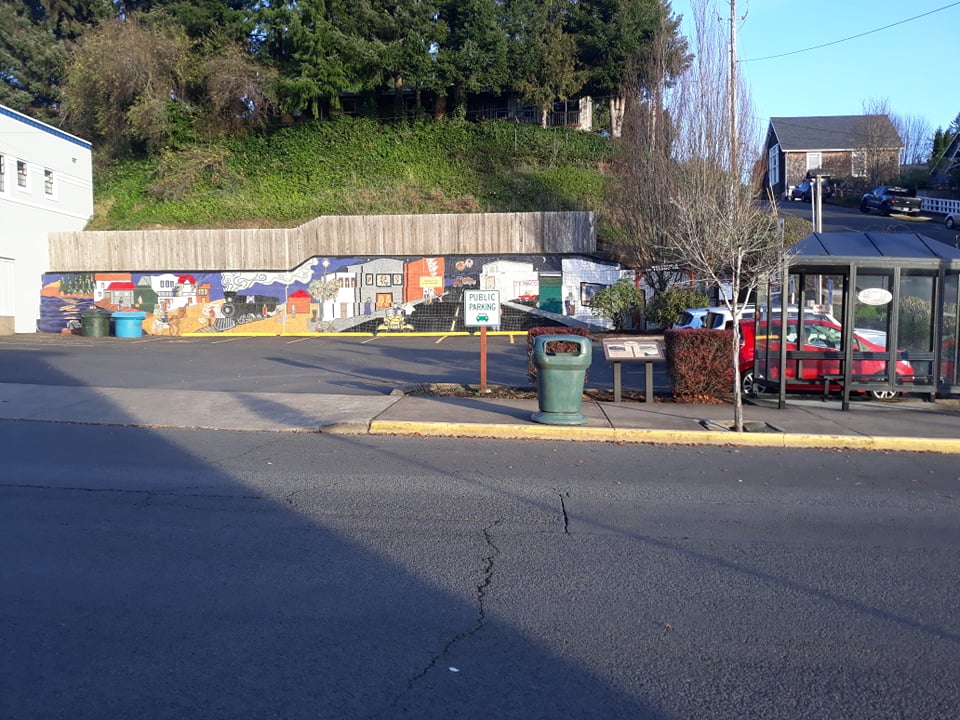
23. Gaither Motors (Store fronts/apartments) – 170 N. Main
In early days, this was the site of a blacksmith shop called the “Red front”. Frank Carson was the genial blacksmith. Next to it was the Toledo Livery Stable. The current building was built in 1926 by A.T. Peterson as an extension of the Lincoln Hotel building. Peterson had a Ford dealership here until Terrence Gaither purchased the business and ran it for many years. The Toledo Boxing Association held matches upstairs in the service bay. By the 1970’s, the building had been remodeled into a retail space which was a “mail” for a time, and also an IGA Grocery. The building fell into disrepair and was about to be condemned when Dallas Smith bought it and remodeled it into apartments upstairs and retail below.
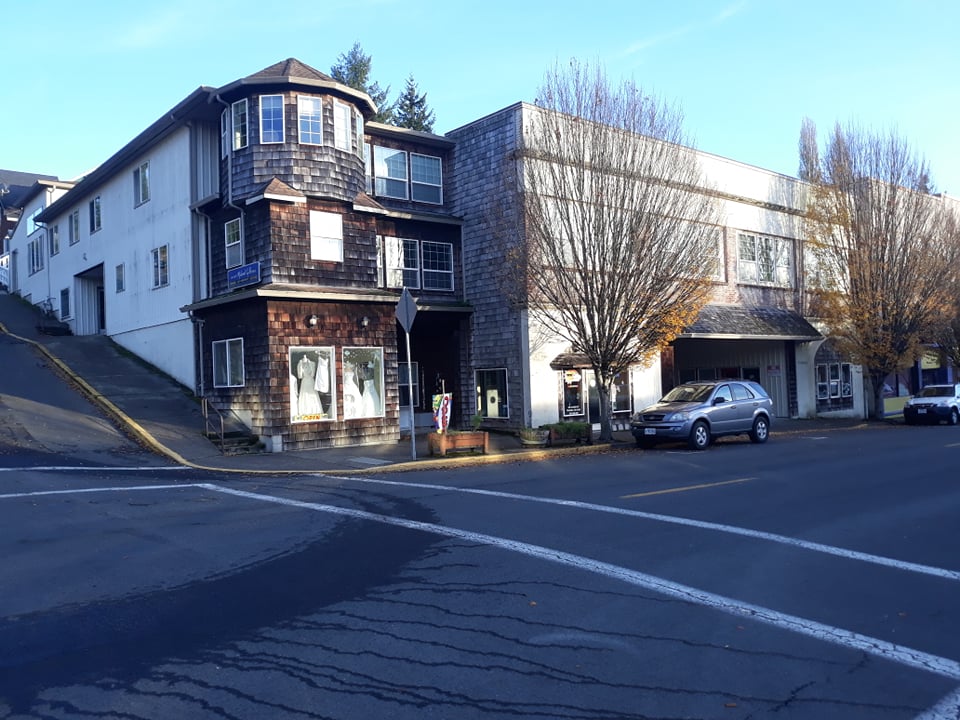
24. Lincoln Hotel (Hotel Toledo) – 160 N. Main
A.T. Peterson, Toledo Pioneer and businessman, built the hotel in two stages starting in 1922. At first it included the Hayden Hardware store, Papez Jewelry and the hotel upstairs. After the big sawmill opened, Peterson expanded the building by adding a third floor, and moving today’s AWPPW Union hall from the corner of Graham and Main up around the corner behind the newly expanded hotel. The old wooden structure originally was a hardware store owned by Nye and Peterson. After it was moved, it became home for the Toledo Elks Lodge, until they built the current lodge on the site of the first Lincoln County Courthouse. The Lincoln Hotel was a very busy place in the days when travelers stayed overnight in Toledo before continuing their journeys. It was the Greyhound Bus Depot, and at times buses would be lined up along Graham Street. The Lincoln Grill was a popular diner, and the hotel lobby also had the telephone switchboard for a time, as well as law offices of English & Krause and the barber shop of B. M. Howe. Looking up Graham Street, we can see St. John’s Episcopal Church, built in 1937. The church was designed by Ellis Lawrence, founder of the University of Oregon’s School of Architecture. It replaced an earlier church on the same site built in 1887. On the opposite corner was the Toledo Fire Hall, with city offices upstairs. It was also used for the first high school classes in 1909.
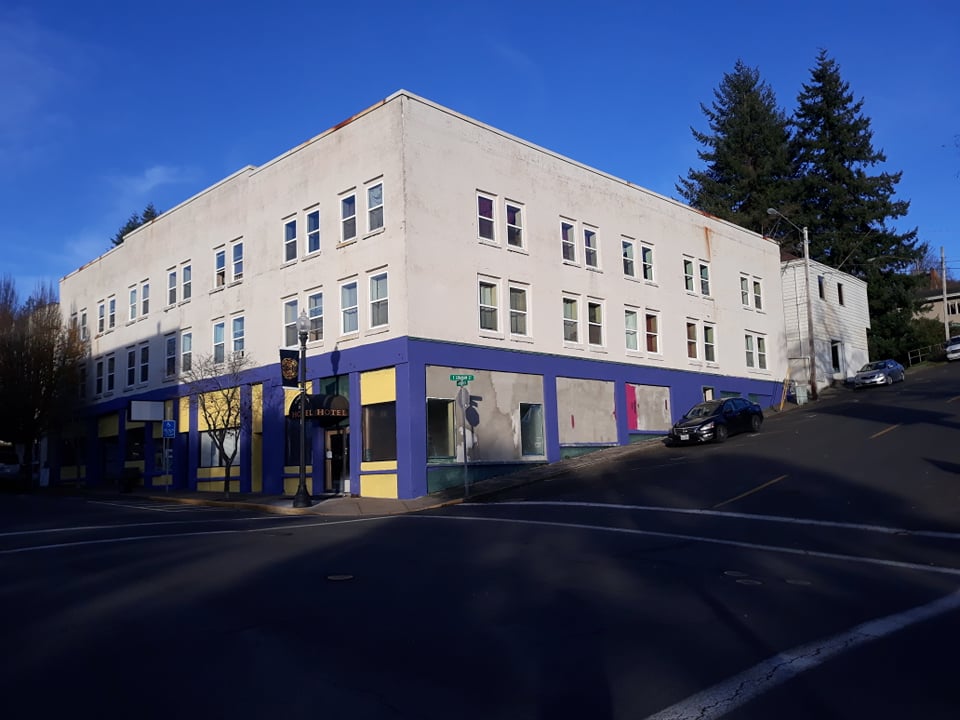
25. National Security Bank (Bank of the West) – 112 S. Main
National Security Bank, the only bank in Toledo from 1933 until 1969, was located on the corner of Graham and Main. Built by Guy Roberts and other local businessmen, it was opened in 1920 as the first National Bank ofToledo. It joined Toledo’s first bank, 1901 Lincoln County Bank, which at the time was located on the site of today’s Bank of the West. The beautiful Victorian home ofJoseph Graham had occupied the site until 1901. The two banks were merged after the bank moratorium in 1932.
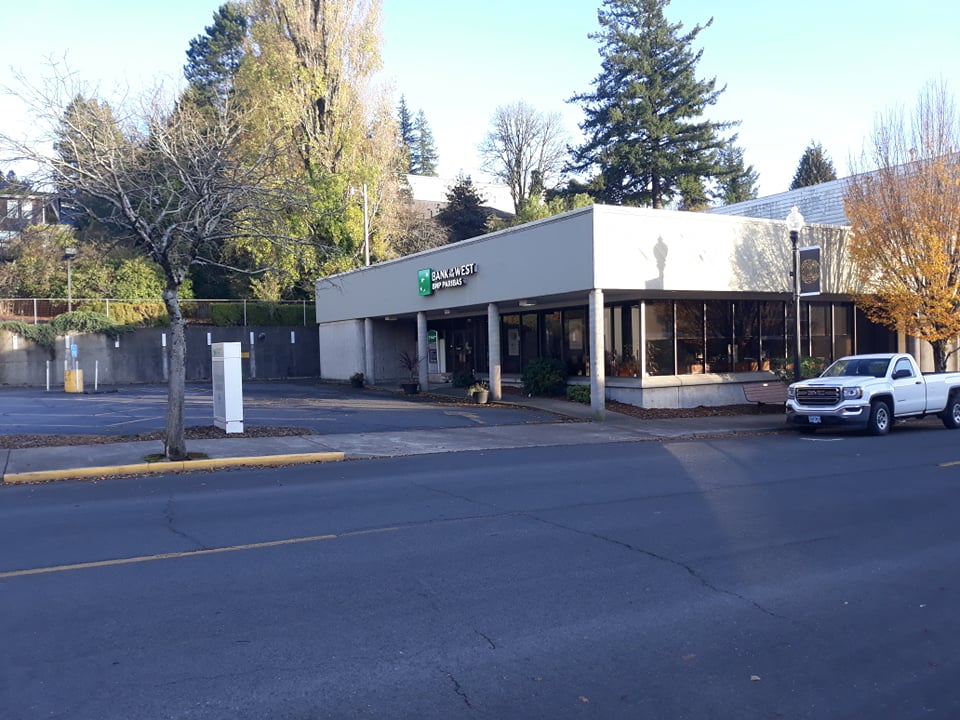
26. Masonic Building (Bayside Gallery) – 192 S. Main
This building was built in 1901 by lawyer C.E. Hawkins. He was approached by a William Scarth from Canada looking to open a bank in Toledo. Scarth leased the north half of the ground floor and opened the first bank in Toledo, the Lincoln County Bank. The remainder of the ground floor was occupied by the Farmer’s Store, and later by Frederick & Panck’s Grocery. Upstairs were the law offices of Hawkins and G.B. McClusky. The original spire was removed when it proved unstable. The Masons leased the upper floor and remodeled it into their chambers in 1921. They eventually purchased the building.
27. Rock Park 192 between 208 south main
In the early days of Toledo, this area was a stairway leading up to the County Courthouse on the hill above. It also was the site of a bandstand in the early 1900’s where public concerts were played. The Lincoln County Courthouse was built in 1899, and was used for county business until 1955, when the county seat was moved to Newport. The building was torn down and replaced by the current Elks Lodge in 1955.
28. Yaquina Building (Toledo Centennial History Center/shops/apartments) – 208-246 S. Main
Built in 1926 by Guy Roberts, WT Bail, for retail space and rooming upstairs. The Associated Grocery Store and then Sid and Teeny’s Grocery Store were located where the Centennial Center is today. The barber shop has continuously been operated as a barber shop since the opening of the building. Toledo Post Office occupied the south end of the ground floor during 1930-1959.
